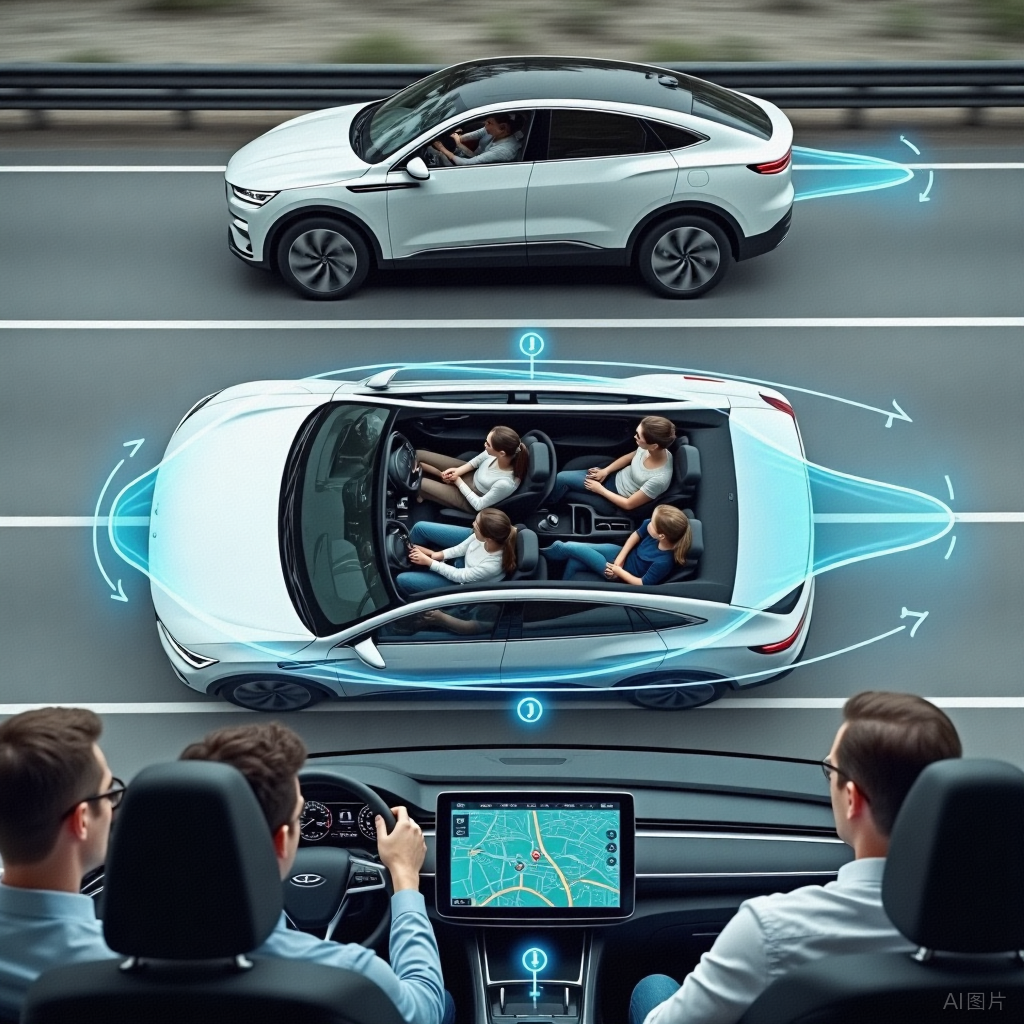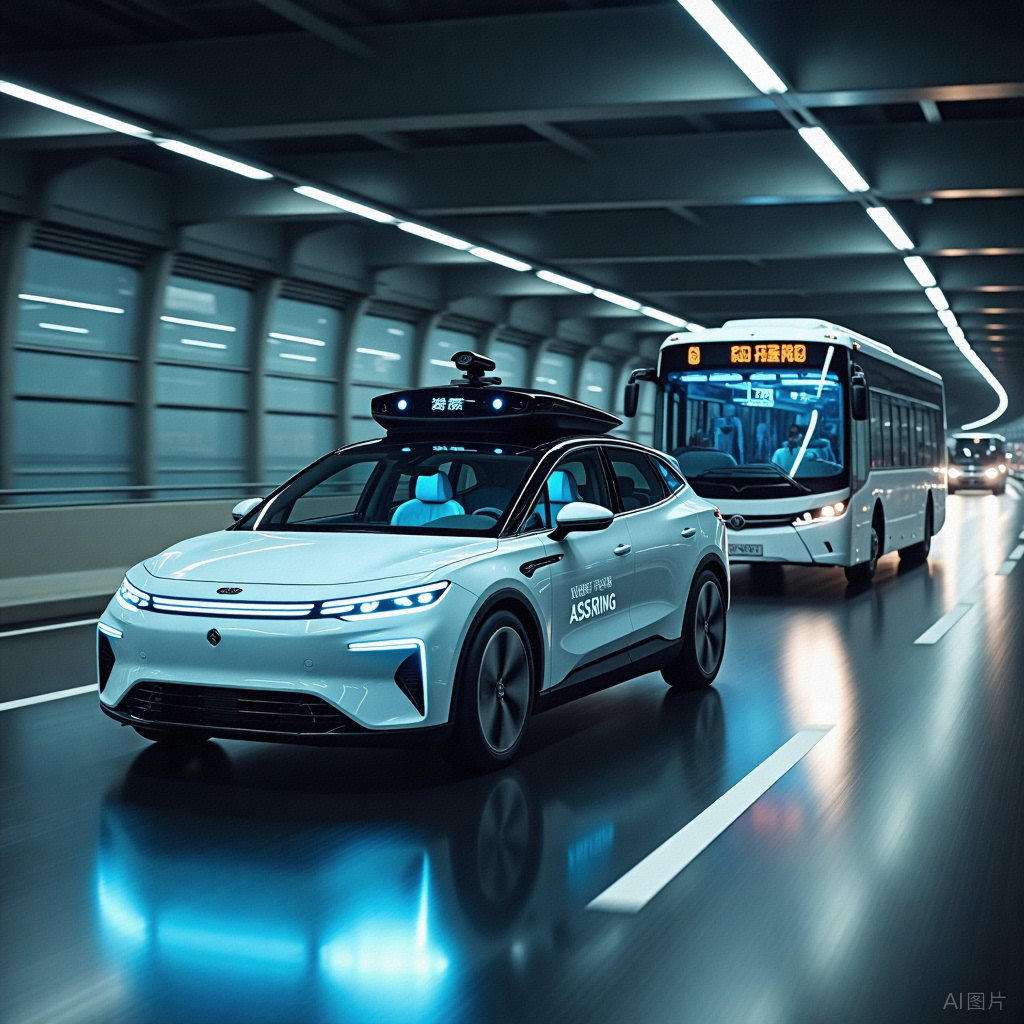Intelligent Driving: An Evolution from Human Control to Machine Control
![]() 05/07 2025
05/07 2025
![]() 481
481
Introduction
In the burgeoning field of automotive intelligence, the terms intelligent driving, ADAS, autonomous driving, and driverless driving are often conflated. However, these concepts harbor distinct differences in technological sophistication, functional scope, and application scenarios. This article delves into the evolutionary transition from human control to machine control, analyzing it through four prisms: technical definitions, functional classifications, application contexts, and industry landscapes.
(For further reference, please visit: Distinguishing Driverless Driving from Autonomous Driving: The Transitional vs. the Ultimate Form)

I. Technical Definition: A Gradual Shift from Assistance to Autonomy
1. Intelligent Driving
Intelligent driving serves as an umbrella term for vehicle intelligence, encompassing technologies ranging from basic ADAS to fully autonomous driving. It involves vehicles perceiving their environment, making decisions, and executing controls through sensors, algorithms, and actuators. Its core objective is to enhance driving safety, comfort, and efficiency via technological advancements, essentially upgrading the human-vehicle interaction to a more intelligent level.
2. ADAS
ADAS represents the foundational form of intelligent driving, characterized by 'human control with system assistance'. It reduces driver workload through features such as Lane Keeping Assist (LKA), Adaptive Cruise Control (ACC), and Autonomous Emergency Braking (AEB), but constant driver monitoring and readiness to take control remain necessary.
Examples include Tesla Autopilot and NIO NOP, both classified as L2-level ADAS, which require the driver to hold the steering wheel.
3. Autonomous Driving (AD)
Autonomous driving stands as an intermediate phase in intelligent driving, distinguished by 'system-driven operation with human assistance'. According to SAE classifications, L3 (Conditional Automation) marks a significant milestone: The system can take full control in specific scenarios (e.g., highways, closed parks) but requires driver intervention upon request.
Mercedes-Benz Drive Pilot, certified at L3 in Germany, allows drivers to disengage their hands and eyes from the wheel in congested traffic.
4. Driverless Driving
Driverless driving embodies the ultimate form of intelligent driving, aiming for 'full machine control without human intervention'. It encompasses both L4 (High Automation) and L5 (Full Automation): L4 operates in limited scenarios (e.g., Robotaxi, logistics parks), while L5 can function in any scenario.
Waymo's Robotaxi service in Phoenix, USA, exemplifies L4, with vehicles devoid of steering wheels and brake pedals.
II. Function Classification: A Technological Leap from L0 to L5
In the realm of intelligent driving, ADAS, autonomous driving, and driverless driving are categorized by levels of autonomy, akin to a martial arts secret manual, with each level signifying distinct capabilities.
The Society of Automotive Engineers (SAE) outlines six levels of autonomy from L0 to L5:
| Level | Name | Technical Characteristics | Typical Scenarios |
|---|---|---|---|
| L0 | No Automation | Provides warnings (e.g., blind spot monitoring, front collision warning) without control intervention. | Traditional fuel vehicles |
| L1 | Driver Assistance | Single function automation (e.g., cruise control, lane keeping) requiring continuous driver monitoring. | Highway following |
| L2 | Partial Automation | Multi-function collaborative automation (e.g., ACC+LKA) where the driver must hold the steering wheel and be ready to take over. | City congestion following |
| L3 | Conditional Automation | System-led driving with driver takeover upon prompt (e.g., Mercedes-Benz Drive Pilot in congested roads below 60 km/h). | German highway congestion |
| L4 | High Automation | System fully takes over, no driver required in limited scenarios (e.g., Waymo Robotaxi in a fixed area). | Phoenix Robotaxi service |
| L5 | Full Automation | System takes over in all scenarios, no driver required, no steering wheel or pedals. | Any road globally |
III. Application Scenarios: A Diverse Expansion
Intelligent driving serves as a broad umbrella encompassing ADAS, autonomous driving, and driverless driving. ADAS functions as a supporting role, while autonomous and driverless driving are the main protagonists, albeit with vastly different levels of autonomy.
1. ADAS (L1, L2 Levels)
- Personal Travel: Alleviates long-distance driving fatigue and enhances safety.
- Logistics Transportation: Reduces truck driver workload and accident risks.
- Technical Limitations: Unable to handle complex scenarios (e.g., construction zones, unmarked intersections), necessitating constant driver supervision.
2. Autonomous Driving (L3-L4 Levels)
- Robotaxi: Unmanned passenger services in limited areas (e.g., Waymo in the US, Luobo Kuaipao in over a dozen Chinese cities).
- Logistics Trucks: Autonomous driving on highways to cut labor costs (e.g., TuSimple in the US, Kaer in Beijing-Tianjin-Hebei).
- Technical Challenges: L3 needs to address ethical and legal issues of 'human-machine handover', while L4 must overcome 'long-tail scenarios' (e.g., severe weather, rare obstacles).
3. Driverless Driving (L5 Level)
- Shared Mobility: Fully unmanned passenger services, disrupting traditional travel modes.
- Special Operations: Unmanned transportation in closed environments like mines and ports (e.g., Yikong Zhijia in open-pit coal mines).
- Technical Bottlenecks: Must achieve 'full-scenario generalization' to ensure 100% safety in any context.
IV. Industry Status: A Balance Between Rapid Progress and Safety Concerns
1. Rapid Technological Advancement: An 'Arms Race' Between Automakers and Tech Companies
- Automakers: Tesla, NIO, Li Auto, and others use L2-level ADAS as their core selling point, upgrading features via OTA.
- Tech Companies: Huawei, Baidu, Momenta, etc., offer L4 solutions and partner with automakers for Robotaxi implementation.
- Traditional Tier 1 Suppliers: Bosch, Continental, etc., are transforming into integrated software and hardware providers, introducing products like domain controllers and high-precision maps.

2. Safety Concerns: Regulatory Upgrades Prompted by Accidents
- In August 2022, a new-energy vehicle in Zhejiang, China, collided with a malfunctioning vehicle after activating ADAS, leading to a fatality.
- In November 2024, a driver in Nanjing fell asleep while using ADAS, causing the vehicle to crash into a guardrail. Highways in Anhui, Zhejiang, Jiangsu, and other regions issued warnings against the misuse of intelligent driving systems.
- From February to April 2025, the Ministry of Industry and Information Technology emphasized that 'combined driver assistance systems must extend from highway to complex urban scenarios, prioritizing safety'.
(For further reading, visit: Impact of New Regulations on Intelligent Driving: Will Automakers Fade or Rebound?)
3. Commercialization: The Transition from Technical to Commercial Feasibility
- Robotaxi: Waymo offers over 250,000 trips weekly in the US, with Chinese competitors like Luobo Kuaipao, Pony.ai, WeRide, and Horizon Robotics hot on its heels.
- Logistics Trucks: Kaer operates autonomous trucks in northern China, while Yikong Zhijia has deployed 1,000 unmanned mining trucks in open-pit coal mines.
- Unmanned Delivery: Companies like Neolix, Jiushi Intelligence, Cainiao, JD.com, Jimo Technology, and Xingshen Intelligence are active in residential areas and parks nationwide.
- Regulatory Breakthroughs: In 2022, Shenzhen's 'Regulations on the Administration of Intelligent and Connected Vehicles' allowed L3 vehicles on the road. In 2025, Beijing's 'Regulations on Autonomous Vehicles' explicitly supported Robotaxi commercial operations.
V. Future Outlook: Triple Breakthroughs in Technology, Regulation, and Ethics
1. Technological Breakthroughs
- Sensor Fusion: Redundant design combining lidar, cameras, and millimeter-wave radars to enhance perception accuracy.
- Algorithm Upgrades: End-to-end large models (e.g., Tesla FSD V12) integrating 'perception-decision-control'.
- Vehicle-Road Collaboration: 5G+V2X technology enabling real-time 'vehicle-road-cloud' interaction, surpassing single-vehicle intelligence limitations.
2. Regulatory Breakthroughs
- Liability Determination: Clarifying automakers', drivers', and insurance companies' rights and responsibilities in L3 accidents.
- Testing Licenses: Expanding autonomous driving test areas to accelerate technological iteration.
- Standard Setting: Establishing globally unified safety standards for autonomous driving.
3. Ethical Breakthroughs
- 'Trolley Problem': How algorithms make emergency decisions (e.g., prioritizing passenger or pedestrian protection).
- Job Replacement: The impact of autonomous driving on professions like drivers and truckers, along with reemployment training.
VI. Conclusion: The Evolution from Tool to Partner
The evolution of intelligent driving, ADAS, autonomous driving, and driverless driving fundamentally redefines the human-vehicle relationship:
- ADAS: The vehicle is a 'tool' requiring full human control.
- Autonomous Driving: The vehicle becomes a 'partner' collaborating with humans.
- Driverless Driving: The vehicle takes on the 'subject' role, making fully autonomous decisions.
- Intelligent Driving: A 'hybrid' of the above, emphasizing a smart driving experience.
The ultimate goal of this transformation is to elevate vehicles from mere 'machines' to 'intelligent entities', redefining human travel while enhancing efficiency. From steam cars requiring three operators to voice-command-driven driverless cars navigating to Sanlitun, humans have transferred driving control in 150 years. One day, the steering wheel will become a relic of the past!
In conclusion, Wurenchelai (Public Account: Wurenchelai) believes:
When reverse parking lessons in driving schools become history book illustrations, and 'old drivers' evolve from a badge of honor to a relic label, we finally grasp that technology's ambition isn't to teach machines to drive but to make humans forget how to drive.





